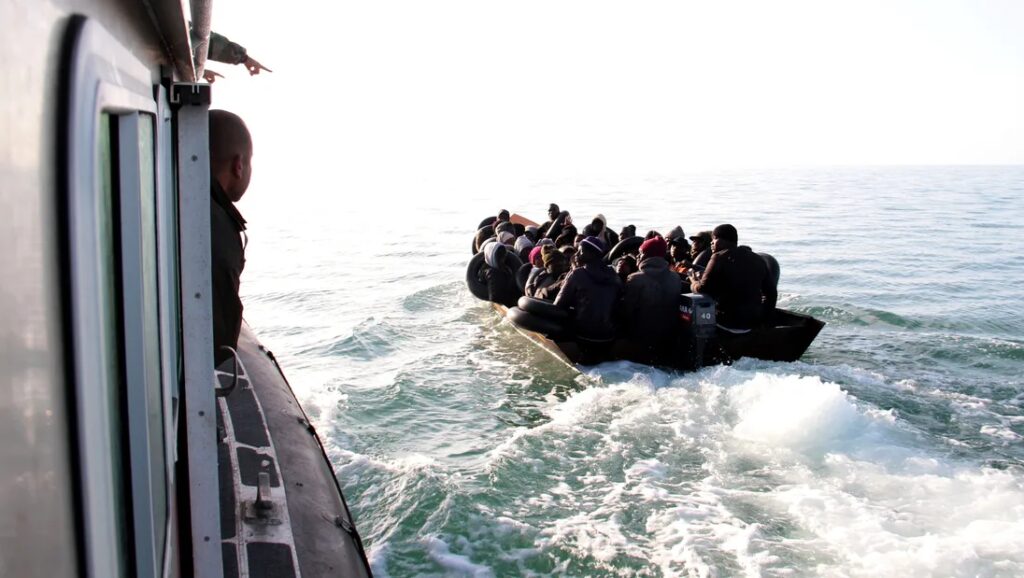
An ailing economy and tough border measures elsewhere along Africa’s north coast are to blame
THE ITALIAN island of Lampedusa is home to around 6,000 people. In the past week most of the 14,000 migrants who reached Italy have arrived on its shores. Hundreds more have died trying to make it there by sea in the past year, including a newborn baby whose body was recovered on September 16th. The following day Ursula von der Leyen, the president of the European Commission, visited the island with Giorgia Meloni, Italy’s prime minister. Mrs von der Leyen promised a “co-ordinated response” by the EU to the surge in arrivals on Lampedusa.
A big part of the solution will involve working with Tunisia. A growing proportion of migrants moving through and from north Africa arrive from the country. This year some 75,000 people have migrated by sea from Tunisia to Italy, many in makeshift boats. The figure for the whole of 2022 was just over 30,000. Why is there a surge of migrants leaving from Tunisia?
A few years ago Libya was the most common departure point. In 2016 180,000 people arrived in Italy from that country, which was then relatively easy to enter and leave. In the following year more than 90% of the migrants who came by sea had departed from Libya.
Those huge numbers prompted European governments to try to close the route. In 2017, as part of a wider EU strategy, Italy agreed to invest in Libya if the country stepped up its border control. As part of the deal, Italy’s government began training and equipping Libya’s coastguard, which is in fact mostly made up of militias independent of the internationally recognised government in Tripoli. Since then the number of people reaching Italy from Libya has fallen by 55%. The coastguard intercepts tens of thousands each year.
Those returned to shore face mistreatment by the Libyan authorities. Some have reported torture and rape in detention centres. Migrants began to look for other routes. By 2020 the share of sea-borne migrants to Italy who had embarked in Libya had fallen to less than 40%; Tunisia had become the main point of departure.
But Tunisia is not just a transit country; a growing minority of those leaving its shores are Tunisian nationals. In 2016 Tunisians accounted for less than 4% of arrivals in Italy; by 2022 they were 18%, the second largest group by nationality. The Tunisian economy has been weak since 2015. Annual inflation is over 9%; unemployment has been at around 15% or higher for more than a decade. The pandemic dealt a heavy economic blow, too. As lockdowns kept tourists away, GDP shrank by 8.8%.
Politics is a push factor, too. Kais Saied, the country’s strongman, silences dissent and arrests opposition figures. After Mr Saied accused black Africans of plotting to replace Tunisia’s Arab majority in February, mobs attacked sub-Saharan migrants with petrol bombs and thousands were evicted from their lodgings. Many are now desperate to leave Tunisia.
The EU is stepping up its efforts to work with Tunisia. In July the bloc signed a memorandum of understanding with Mr Saied and dangled the prospect of sending €1bn ($1.1bn) to support his country’s economy and tackle migration (this would be contingent on Tunisia reaching a bailout agreement with the IMF; Mr Saied rejected an offer from the fund in April). Meanwhile Ms Meloni wants the EU to set up a naval blockade to prevent small boats from reaching Italy’s shores. Mrs von der Leyen has set out a ten-point plan for Lampedusa that includes a promise to “explore options to expand naval missions in the Mediterranean”. Such measures may increase interceptions of boats travelling from Tunisia, but they won’t stop people from trying to flee: desperate migrants will continue to find a way.
